

FEATURING
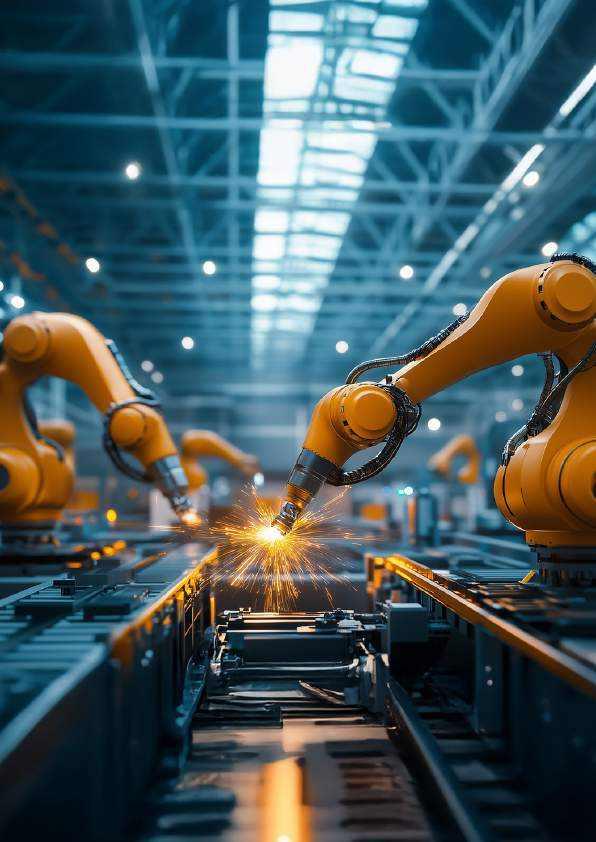
SpecialTopics
By Dr. Ghalia Nassreddine, Rafik Hariri University, Lebanon;
Dr. Obada Al-Khatib, University of Wollongong in Dubai, UAE;
Dr. Mohamad Nassereddine, University of Wollongong in Dubai, UAE
Dr. Tanujit Chakraborty, Sorbonne University Abu Dhabi UAE
AcademicPerspectives
Professor Derin Ural, University of Miami, U.S.
LeadershipSpotlight
Professor Khalid Hussain, Dean of Engineering and Computing, AURAK, UAE
IndustryPerspectives
Dr. Waddah Ghanem Al Hashmi, Chairman of the OSH Federal Committee in the UAE
StudentVoice Nour Mostafa Kamel, AURAK, UAE
Trends
Anne-Gaelle Colom, University of Westminster, UK
TheAgeof GenerativeAI
February 2025
Editorial
Welcome to UniNewsletter
LauraVasquezBass
SpecialTopics
Unlocking the Role of Generative AI in Engineering Education: An Overview of its Opportunities and Challenges
ByDr.GhaliaNassreddine,Computerand InformationSystemsDepartment,RafikHariri University,Lebanon;Dr.ObadaAl-Khatib, SchoolofEngineering,UniversityofWollongong inDubai,UAE;Dr.MohamadNassereddine, SchoolofEngineering,UniversityofWollongong inDubai,UAE

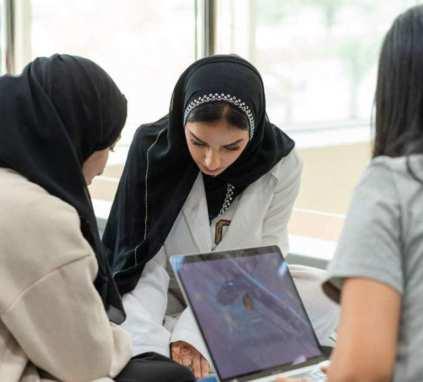
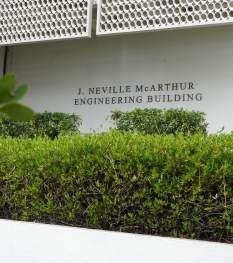

SpecialTopics
Turning Data Science into Action: Case Studies in Building a Sustainable Future with Data Science Engineering
ByDr.Tanujit Chakraborty
AssociateProfessorof StatisticsandData
Science,SorbonneUniversity AbuDhabi,UAE



Academic Perspectives
Teaching an Engineering Class with a Chatbot as a Teaching Assistant
ByProfessorDerinUral,Collegeof Engineering,UniversityofMiami,U.S.
22
LeadershipSpotlight
Embracing AI-driven Solutions at the American University of Ras Al Khaimah (AURAK):
AnInterviewwithProfessorKhalid Hussain,DeanofEngineeringand Computing
The Role of Engineers in Society and Industry: A life skill, and not necessarily a profession
ByDr.WaddahSGhanem AlHashmi,ChairmanoftheOSH FederalCommitteeintheUAEand SeniorDirectorintheEnergySector

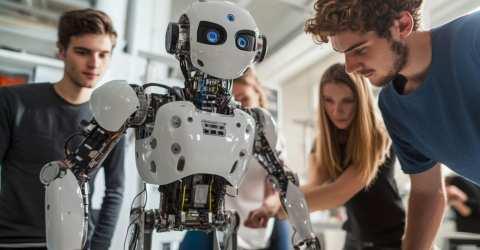

From Resistance to Integration: A Reflection on my Journey with AI in Academia
ByNourMostafaKamel, BachelorofSciencein ComputerEngineering, AmericanUniversityofRas AlKhaimah(AURAK),UAE
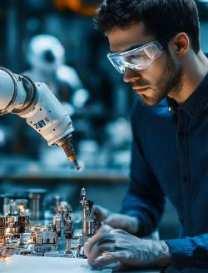
Adapting to the Future: Preparing for Software Development in the Age of Generative AI
ByAnne-GaelleColom, AssistantHeadofSchool andLearningand TeachingDirector,School ofComputerScienceand
Engineering,Universityof Westminster,London,UK
Welcometo UniNewsletter
Laura Vasquez Bass

Ithasbeena wonderfulexperience toworkwiththis broadsetofengineers andwesincerelyhope youenjoythe interestinginsights andwordsofwisdom theyhavetooffer.
WhileIamincrediblyhappyformydecisionto pursue advanced degrees in the Humanities they rigorously equipped me for my work with UniNewsletter, after all reading this fascinating issue on various forms of engineering pathways and AI caused me to envy the lucky students who have this learning trajectory ahead of them. This special issue, ìEngineering in the Age of Generative AI,î is composed of a truly diverse range of engineers, those trained in civil, mechanical or environmental engineering, as well as computer software engineers. Appreciating the tremendous impact that AI is having on education, we thought it apt to highlight the shifting debates on how a highly technical discipline like engineering both benefits hugely from the streamlining capabilities of AI, but also consider its dangers in engineering education. This issueís Student Voice writer, Nour Mostafa Kamel, incisively describes this dialectic as the ìpromise and perilsîofAI.Wewantedtoaskhowstudentsin various engineering pathways could achieve the AI literacy necessary for job placement these days, while also acquiring the immense amount of practical and technical aptitude that is foundational to the skillset of engineers. This issueís contributors answered our call thoughtfully, profoundly and offered an abundanceofinstructiveadvicetobothinstitutions with engineering programs and the students enrolled or applying to them. They even posed many questions of their own, which we are sure will prove enlightening reading.
Beginning the issue with the first of two articles in our Special Topics section is a highly informative co-authored piece by Dr. Ghalia Nassreddine from Rafik Hariri University, Lebanon, and Drs. Obada Al-Khatib and Mohamad Nassereddine from the University of Wollongong in Dubai, UAE. They offer a
detailed, panoramic discussion of the opportunities and challenges faced by institutions in incorporating AI into engineering education. For those seeking a grounding in how AI technologies can be used in various capacities to support student experience, this is a must read. Our second SpecialTopicsarticleisbyDr.TanujitChakraborty, Associate Professor of Statistics and Data Science at Sorbonne University Abu Dhabi, UAE. Dr. Chakraborty discusses how data science engineeringisdrivingprogressontheUNísSustainable Development Goals (SDGs). Techniques like machine learning, forecasting and generative AI transform raw data into actionable tools in areas such as public health, economic stability and urban planning. The case studies he highlights show how innovative, data-driven solutions are bridging the gap between theory and real-world impact,towardsthegoalofbuildingasustainable future.
In this issueís Academic Perspectives section, the University of Miamiís (Florida, U.S.) Professor Derin Ural explores the integration of an AI chatbot as a teaching assistant in her engineering course. The Chatbot, ìKay,î was designed to align with course goals, offering real-time support, personalized explanationsandsummariesofcomplextopicsto students. Dr. Ural reports that students found the chatbot to be an accessible and valuable tool, especially those balancing work or non-traditional schedules. She concludes that while it didnít-and couldnít-replace human instruction, the chatbot did enhance learning and engagement, which demonstrates the potential of AI to complement traditional teaching methods.
Next in our distinguished Leadership Spotlight section is Professor Khalid Hussain, Dean of EngineeringandComputingattheAmericanUniversity of Ras Al Khaimah (AURAK), UAE. Professor Khalid discusses his over three-decade career in academia, beginning in the UK. He discusses in depth the ways that AURAK-the first institution in theUAEtoofferabachelorísdegreeinAI-isadapting to effectively train their students in the age of AI. He also provides many wise insights on exactly how AI ought to be used in order to maintain the integrity of core engineering skills that are essential for all engineers.
Following Professor Khalid, this issue we are incredibly excited to introduce to you all a new section of UniNewsletter. We are so privileged to
presentanarticlefromByDr.WaddahSGhanemAl Hashmi, Chairman of the OSH Federal Committee in the UAE and Senior Director in the Energy Sector, in our Industry Perspectives section. As its title suggests, we wanted readers of UniNewsletter to get the opportunity to hear from seasoned professionals actively working in industry careers. In context of this issue, Dr. Waddah holds a PhD in Environmental Engineering from Cardiff University, Wales, UK, but has gone on to enjoy a hugely successful career and is considered a global authority on Governance and Leadership in Health, Safety and Environment (HSE) and High Reliability Organizations. Given the diverse path his career has taken, Dr. Waddah writes a thought-provoking article about the unique skillsets of engineers and suggests that they have much to offer beyond the immediate territory of their discipline.
AsIhavealreadyrelayed,thisissueísStudentVoice contributor is Nour Mostafa Kamel, BSc student in Computer Engineering at AURAK. Nour writes about her experience of the AI boom, which occurred mid-way through her studies, addressing how her initial skepticism of AI tools has reduced over time. Shewritespassionatelyaboutthejoysanddifficulties of manually learning computer coding before anAIassistantwasavailabletosolvetheinevitable errors.Herarticlereachesaninstructiveconclusion. She suggests that universities must seriously consider avoiding excessive AI exposure to junior students because they will miss out on the essential learning experience of encountering frustration and learning how to problem solve.
Closing this issue in our Trends section is Anne-Gaelle Colom from the University of Westminster, London, UK. Anne-Gaelleís words are essential reading for software engineers entering the field. She expertly outlines how AI has not only changed the skillset required for developers, but alsohowthejobmarkethaschanged-veryhelpfully highlighting what developers must do in order to remain competitive in todayís market. Like Nour, Anne-Gaelleinsistsontheimportanceofstruggleó in the learning experience, arguing that without it students will bypass the development of crucial critical thinking and analytical skills that are paramount to their long-term success.
Ithasbeenawonderfulexperiencetoworkwiththis broad set of engineers and we sincerely hope you enjoy the interesting insights and words of wisdom they have to offer.
Apply and join oneofthetop50universities intheworld!
GloballyrecognisedFrenchdegreesaccreditedbytheUAE
1
3k
5
41st Shanghairanking Worldwidein2024
⬣ 25undergraduateandpostgraduateprogrammes
⬣ ProgrammestaughtinFrenchandEnglish
⬣ Internationalstudentexchangeprogrammes
⬣ Multidisciplinaryresearchledinstitution
⬣ Excellencescholarships
⬣ Diversestudentpopulationof60+nationalities
⬣ InAbuDhabi,namedsafestcityintheworld
ScantheQRcodetoexploreourprogrammes andstartyourapplicationtoday!
93k Sqmstate-of-the-artcampus withonsitesportsfacilities, dormsandlibrary


Nobelprizes since2004
Alumni
st Frenchuniversity establishedinAbuDhabi



UnlockingtheRoleof GenerativeAIin Engineering Education:
An Overview of its Opportunities and Challenges
Dr.GhaliaNassreddine, Computer and Information Systems Department, Rafik Hariri University, Lebanon
Dr.ObadaAl-Khatib, School of Engineering, University of Wollongong in Dubai, UAE
Dr.MohamadNassereddine, School of Engineering, University of Wollongong in Dubai, UAE
Generative AI is a type of artificial intelligence (AI) that produces new and original content that bears a striking resemblance to human-created content. Traditional AI systems focus on predicting or classifying values or classes. However, generative AI tries to produce content that is suitable for user requests. The generated content can be text, images, graphs, audio or video. In the early 2010s, generative AI started gaining attention, especially with the huge development of deep learning techniques and transformer models such as OpenAI and ChatGPT. It becomes a powerful tool for creating realistic and engaging
content that can mimic human creativity.
Generative AI integration can be considered as the next big step in digital evolution. It has become one ofthemostpromisingandsignificant technologies. Its higher education applications, especially in the fields ofelectricalandcomputerengineering, allow for producing new and original content that closely mirrors human-created work. This approach has the potential to transform the field. It can help in creating an interactive and more engaging learning environmentcomparedtotraditional tools that make education more participatory. These tools may
“ “ GenerativeAI integrationcan beconsideredas thenextbigstep indigital evolution.Ithas becomeoneofthe mostpromising andsignificant technologies.

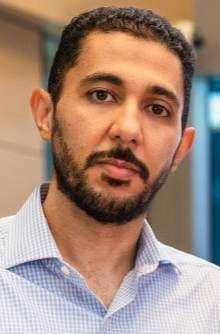
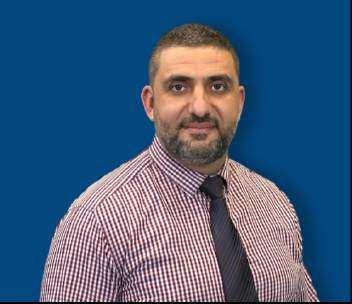
enhance cognitive processes and result in better academic performance due to its ability to advance engagement rates among students. Furthermore, generative AI tools help in offering more personalized learning experiences, like intelligent tutoring systems that adapt to a studentís unique needs and preferences. These tools assist in identifying the weaknesses of each student and focus more on improvingthesefragileareas.Many organizations, such as United Nations Educational, Scientific and Cultural Organization (UNESCO),
demonstrate the importance of personalized learning and support approaches that meet diverse student needs. In addition, intelligent tutoring systems use generative AI to monitor studentsí performance and provide real-time feedback. This can allow for the adjusting of learning techniques to meet individual learning needs, which enables professors from electrical and computer engineering to create more interactive materials to advance the engagement of students and prepare them for industrial appointments.
Furthermore, generative AI technologies can support students with special educational needs. For instance, AI-powered speech-to-text tools, like Microsoft Translator, assist hearing-impaired students, while other AI applications provide real-time sign language translation. Tools like ECHOES use AI to help children with autism develop social
Dr.GhaliaNassreddine
Dr.ObadaAl-Khatib
communication skills through interactive simulations, showing AIís capacity to address various educationalchallenges.Inaddition,generative AI can use virtual and augmented reality to create simulation-based learning environments, such as game-based learning. Simulation-based learning is a type of experiential learning in which students are required to address complex challenges inside controlled settings by engaging in reproducedìreal-lifescenarios.îThis program is better than most video-based classes because it helps you remember what you have learned, the scenarios are the same so that your responses are also the same and you are taught the exact methods needed to complete tasks in a certain industry. For example, as depicted in the images below, generative AI could be used to create virtual laboratories where students engage with simulations of renewable energy systems and
focus on optimizing system outcomes for a hybrid photovoltaic (PV), wind and grid network. Here we see students working on designing a PV system using a virtual lab generated by AI tool.
In addition, generative AI can help lecturers in electrical and computer engineering to design courses by recommendingstructures,prerequisites and sequencing based on engineering educational goals and industry trends. Generative AI-powered technologies can help produce textbooks,lecturenotesandinteractive models, conserving instructorsí time and ensuring content relevance. Additionally, generative AI-driven assessment and feedback technologies can streamline the process and reduce faculty workload.Thefollowingillustrationguides institutions as to how can integrate generative AI into its systems.
To integrate generative AI into insti-
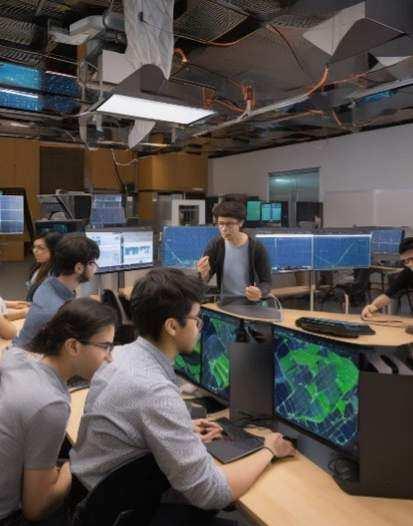
ìGenerativeAI canhelplecturers inelectricaland computer engineeringto designcoursesby recommending structures, prerequisitesand sequencing basedon engineering educationalgoals andindustry trends.î
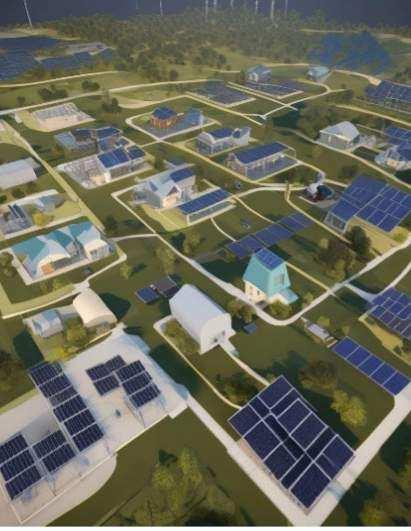
Student using virtual lab generated by AI tool

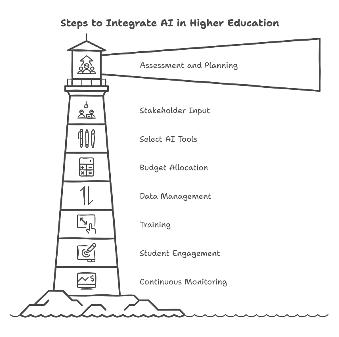
tutional frameworks, engineering departments should first identify applicable areas such as student support, administration or curriculum development. Objectives should align with the engineering program learning outcomes, with input from faculty and staff to address expectations and concerns. Choosing appropriate AI toolsólike Chatbots and AI-driven content recommendationsórequires alignment with budget and institutional goals. Building robust data infrastructures will ensure compliance with GDPR and HIPAA, and training sessions for faculty and staff are crucial for effective AI tool utilization. Educating students on AIís role and benefits can foster participation and offer valuable feedback on its impact on learning and administration.
Despite all the benefits of incorporating generative AI in higher engineering education, it may introduce many challenges as illustrated below:
1. Data Provenance: Generative AI systems analyze massive data that can be subject to inadequate governance, dubious origin, unconsented use or bias. Thus, social influencers or the AI systems themselves can exaggerate errors.
2. Copyright and Legal Exposure: Large databasesthatmaybeproducedby different and non-clear sources are
1. used for training generative AI tools. Thus, generative AI outputs can violate intellectual property and produce legal and reputational threats.
2. Data Privacy Violations: The dataset that is used to train Large Language Models (LLMs) may include personally identifiable information (PII). Developersmustensurecompliance with privacy laws by excluding or removing PII.
3. Sensitive Information Disclosure: Increased accessibility of AI tools could lead to accidental sharing of sensitiveinformationsuchaspatient data or proprietary strategies. Clear governance, guidelines and communication are necessary to protect sensitive information and intellectual property.
To address these challenges and foster responsible AI unitization within engineeringeducation,itiscriticaltodevelop ethical frameworks that prioritize transparency, fairness and accountability. Additionally,institutionsmuststrengthen cybersecurity measures to protect sensitive data among all stakeholders.
“Tointegrategenerative AIintoinstitutional frameworks,engineering departmentsshouldfirst identifyapplicableareas suchasstudentsupport, administrationor curriculumdevelopment. Objectivesshouldalign withtheengineering programlearning outcomes,withinput fromfacultyandstaffto addressexpectations andconcerns.
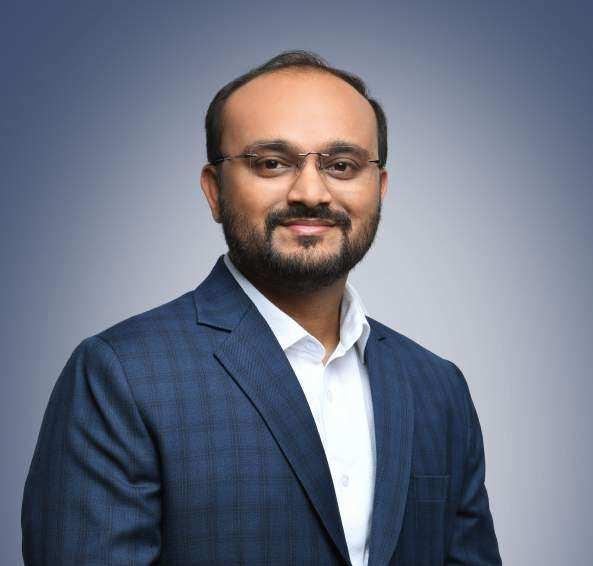
TurningDataScienceintoAction:
Case Studies in Building a Sustainable Future with Data Science Engineering
Dr.TanujitChakraborty
Associate Professor of Statistics and Data Science SorbonneUniversityAbuDhabi,UAE
The United Nations Sustainable Development Goals (SDGs)óthe 2030 agendaórepresent a global blueprint to address pressing challenges like public health, poverty, inequality, sustainability and climate action. Achieving these ambitious goals requires more than just ideas; it demands solutions that bridge the gap between theory and real-world implementation. This is where data science engineering steps in, combining the power of artificial intelligence (AI) and innovative problem-solving to design practical tools that make a difference.
By leveraging techniques such as machine learning, predictive modeling and time series forecasting, engineers and data scientists can transform raw data into actionable insights. However, the journey from data to action isnít without its challenges. Issues such as accessing reliable data, scaling solutions and adapting frameworks to complex real-world conditions remain key obstacles. Recent collaborationsósuch as the UAE and French governmentsí agreement to advance AIósignal the growing recognition of data science as an engineering discipline with the potential to address these hurdles and drive global progress.
ìThejourneyfrom datatoactionisnít withoutits challenges.Issues suchasaccessing reliabledata, scalingsolutions andadapting frameworksto complexreal-world conditionsremain keyobstacles.î
In this article, letís explore some real-world examples where data science engineering has delivered impactful solutions aligned with the SDGs, showcasing how these tools are shaping a more sustainable future.
Case Study 1: Designing AI Tools for Mobile Health (mHealth) Applications
Imagine receiving a motivational message on your phone encouraging you to take a walk or practice mindfulness. These small nudges, powered by data science engineering, are part of mHealth interventions designed to improve well-being. With the growingrelianceonmobiletechnologies, mHealth applications play a vital role in reducing health disparities and advancing SDG Goal 3: Good Health and Well-Being.
From an engineering perspective, designing mHealth tools involves creating algorithms that adapt and optimize in real time. For instance, reinforcement learning (a type of AI) helps these systems learn which messages resonate most with users.
In one of our projects, we developed a hybrid algorithm using Thompson sampling (a
Howcanwedesigncities thatarenotonlyfunctional butalsosustainable?
GenerativeAI,a cutting-edgeengineering tool,canhelpurban plannersvisualizeand createfuturecities. “ “
reinforcement learning method) and statistical models to improve the effectiveness of motivational messages in mHealth apps. This approach has been applied in the ìDrink Lessî app, which supports users in reducing hazardous alcohol consumption. The same principles can be extended to mindfulness and physical activity apps, demonstrating how AI tools can be engineered to address diverse health challenges.
CaseStudy2:Forecasting Tools for Economic Growth and Epidemic Management
Forecasting is a cornerstone of science and engineeringówhether predicting the trajectory of a rocket or the rise of consumer prices. In the context of SDG Goal 8: Decent Work and Economic Growth, accurate forecasts help policymakers design effective economic strategies. For example, we engineered an ensemble neural network model, FEWNet, to forecast inflation rates in emerging economies such as Brazil, Russia, India and China. By combiningeconometricprincipleswith machine learning, FEWNet delivers precise predictions that aid central banks in making informed decisions.
But forecasting isnít just about economics. Itís also crucial for public health. Epidemic modeling, or ìepicasting,î uses data science tools to predict the spread of diseases like dengue or influenza. Our team developed software that incorporates key disease characteristics to provide reliable forecasts, enabling timely interventions in affected regions. These tools highlight the engineering ingenuity required to tackle diverse challenges, from stabilizing economies to saving lives.
CaseStudy3: Generative AI for Sustainable Cities
Urbanization is accelerating, especially in developing countries, leading to challenges like traffic congestion, pollution and the loss of green spaces. How canwedesigncitiesthatarenot only functional but also sustainable? Generative AI, a cutting-edge engineering tool, can help urban planners visualize and create future cities.
In a recent project aligned with SDG Goal 11: Sustainable Cities andCommunities,wecombined statistical modeling with generative AI to predict road network density in small and medi-
um-sized Indian cities. This work answers critical questions, such as: what will our future cities look like? How can we plan infrastructure to meet growing demands? By using spatial indicators and human mobility data, our framework offers planners actionable insights for designing efficient and sustainable road networks. Similar techniques can be adapted globally, showcasing how engineering solutions can address urban challenges.
These case studies illustrate the transformative potential of data scienceengineering.Fromhealth apps to economic forecasting and urban planning, these solutions demonstrate how raw data can be turned into impactful tools. But success requires collaboration. Partnerships with policymakers, international institutions and research centers like Sorbonne University Abu Dhabi ensure that these tools are not only innovative but also practical and scalable.
Looking ahead, our ongoing research focuses on climate actionandairqualitymonitoring, addressing SDG Goal 13: Climate Action. For instance, we are developing geometric deep learning models to forecast air pollution levels in cities like Delhi and Beijing. These tools, combined with engineering principles, could help mitigate the effects of smog and create healthier urban environments.
Achieving the SDGs is a monumental task, but with innovative data-driven engineering solutions, collaborative efforts and a commitment to sustainability, the future looks promising. Data scienceengineeringismorethan a field; itís a bridge connecting todayís challenges with tomorrowís solutions.
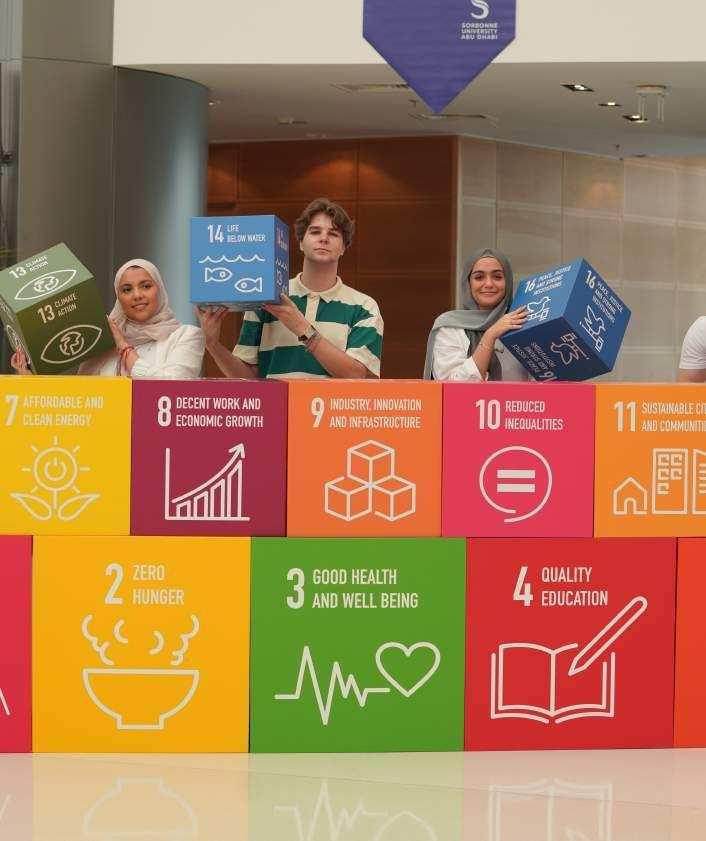
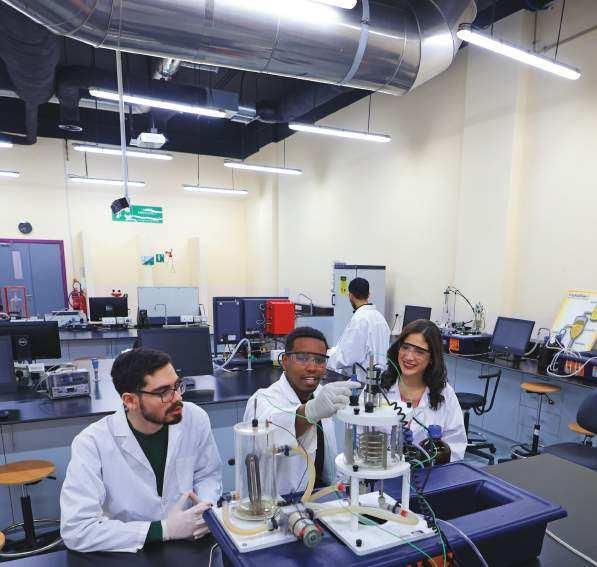

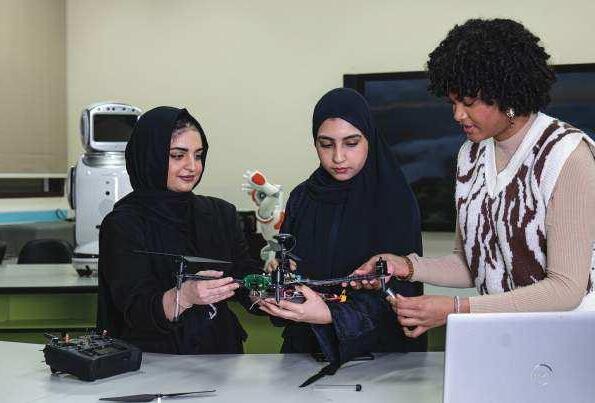
TeachinganEngineering ClasswithaChatbotasa TeachingAssistant
ProfessorDerinUral
Professor
of Practice,
Department of
Civil
and
Architectural
Engineering, College of Engineering, University of Miami, Florida, U.S.
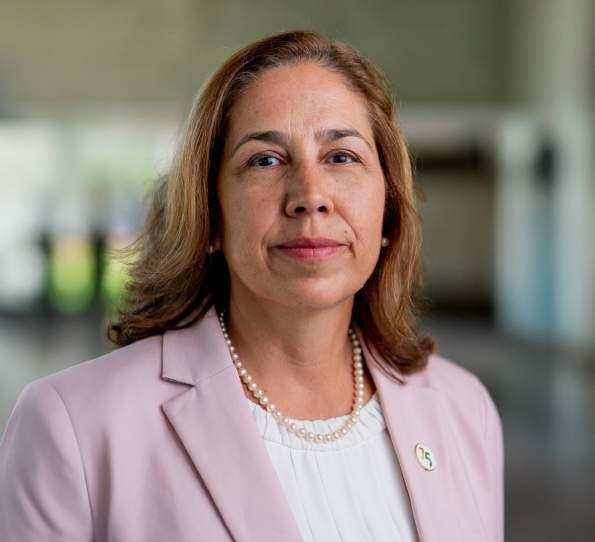
Revolutionizing Pedagogical Approaches ThroughArtificialIntelligence
As an Engineering faculty member who has adapted to student centered pedagogies, including flipped and active learning throughout my three-decade career, I was curious to pilot the use of an Artificial Intelligence (AI) chatbot to enhance my studentsí learning experience. I witnessed that the integration of AI into educational settings is catalyzing profound changes in how diverse learners interact with course content and better engageinthelearningprocess.Withtheability to build course and topic specific chatbots, AI is increasingly employed to deliver tailored learning experiences for students. This article explores the implementation of a chatbot as a teaching assistant in an engineering course at the College of Engineering, University of Miami (UM).Byexaminingitsabilitytoelucidatecomplex concepts, respond to student inquiries at any time of the day and enhance engagement, this pilot contributes to the growing discourse on AIís role in higher education. The results, supported by both student feedback and scholarly research, underscore its transformative potential.
AIChatbots:AParadigmShiftinEducation
The deployment of AI chatbots represents a significant shift in educational support methodologies, driven by a commitment to enhance student learning through technological innovation. As an engineering faculty member, there is a fundamental use for the chatbots to elaborate and explain concepts, and not to problem-solve. My decision to pilot a chatbot was based on research such as that fromTytonPartnersunderscoringthepotential of AI to improve academic engagement. Concurrently, insights from Youth Today highlight
“ “ ThedeploymentofAI chatbotsrepresentsa significantshiftin educationalsupport methodologies,drivenby acommitmenttoenhance studentlearningthrough technologicalinnovation.

theincreasingrelianceoflearnersonAI-driven solutions for academic and informational needs. As emphasized by The Chronicle of Higher Education, equipping educators with the requisite skills to effectively deploy AI tools is imperative for sustainable success for the generationoflearnersrelyingonAIdrivensolutions. Participating in professional developmentworkshopsattheUM,Iwasabletocreate, test and pilot chatbots for my engineering classes this year. Within engineering education, where mastering intricate theoretical and practicalconceptsisparamount,Ifoundchatbots offer an adaptive, engaging and most importantly accessible means of addressing student inquiries on course content. Having traditional and non-traditional students in the class also proved that both groups benefitted from the chatbot, with students working full-timebenefittingthemost.Thechatbotwas an effective alternative to faculty office hours, for those working full-time.
Designing and Implementing the Chatbot Initiative
The chatbot ìKayî employed in my course was meticulously configured to align with course topics and learning objectives outlined in the syllabus.NamingthebotìKayîwasbasedona livingthoughtleaderinthesubjectarea,whom students were able to meet for one session duringthesemester.ChatbotKayísfunctionalities included answering technical questions, summarizing course content, comparing models, giving engineering best practice examples and retrieving information from prior
interactions to personalize support. From an instructional perspective, aligning the chatbotís outputs with course objectives necessitated significant initial investment in prompt design and customization, through iterative questions and answers, instructing the chatbot to share its references. After a period of testing the chatbot, it was ready to pilot with my students. Upon surprisetoseealinktoachatbotonthesyllabus, students were intrigued as they were introduced to the chatbot as a supplementary tool positioned to complement, rather than replace, direct instructional methods.
Key capabilities of the course specific chatbot included:
ï Articulating detailed explanations of engineering principles.
ïOffering concise recaps of topic highlights.
ï Providingreal-timeresponsestoconceptual inquiries outside scheduled class hours, which was the most impactful attribute.
Students were encouraged to utilize the chatbot consistently through assignments that required them to first work without access to the chatbot, andthencomparetheirfindingstothesummary provided by interacting with the chatbot. Students were then able to provide feedback to assess its efficacy. At the beginning of the semester, students interacted with Kay by posing one or two questions, through short
67percentofstudent participantsstrongly agreedand33percent agreedthatthechatbot facilitatedadeeper understandingofcomplex materialandbolstered theiroveralllearning experience. “ “
conversations.Asthesemesterprogressed,their conversations began to flow naturally, with seven to nine questions about various course topics.
EmpiricalInsightsfromStudentFeedback
A structured survey administered at the end of the semester for all students revealed compelling trends:
ï Enhanced Learning Efficacy: 67 percent of student participants strongly agreed and 33 percent agreed that the chatbot facilitated a deeper understanding of complex material and bolstered their overall learning experience. They enjoyed interacting with the chatbot.
ï AcademicConfidence:67percentofparticipants strongly agreed and 33 percent agreed that the chatbot positively influenced their development as more capable and confident students. The chatbot was trained to have a growth mindset and polite tone, which was well-received by students.
ï Universal Endorsement: 100 percent of respondentstothesurveyadvocatedforthe continued integration of chatbots in future iterations of the course.
Students qualitative feedback further illustrated the chatbotís impact and potential for future classes:
ï ìItwasreallyhelpful...Therewassomeinformation I kept on forgetting and the chatbot could always bring back information from previous sessions. Itís definitely a tool that canbebeneficialforstudents,notforcheating or doing assignments for them, but in assisting them with portions they may not understand.î
ï ìAs a full-time working single mother, the chatbot allowed me to continue my education Ö I was in a situation where I was falling behind in my coursework, and was thinking of dropping my courses. The chatbot interactionsatlatehourswasinstrumentalinmy success. All classes should have a TA chatbot!î
These reflections underscore the AI chatbotís role in providing targeted and individualized academic support for the varying student needs.
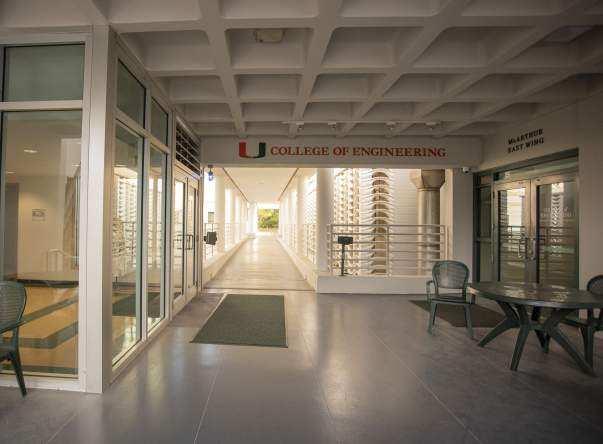

BenefitsofAIIntegrationinEngineeringEducation
The chatbotís contributions extended beyond meeting immediate academic needs, delivering broader pedagogical advantages:
ï Uninterrupted Accessibility: Its availability 24 hours a day and seven days of the week empowered students to seek clarification and reinforcement of topics regardless of the time and their location.
ï Personalized Learning: Leveraging interaction data, the chatbot offered nuanced guidance tailored to individual learning trajectories.Asafacultymemberwhodevelopedthechatbot,havingtheabilitytoanonymously see the questions addressed by students allowed for reinforcement of topics during class hours.
ï Class time Efficiency: By addressing frequently asked questions, it allows faculty to dedicate more time to advanced discussions and mentorship.
“ “
Asafull-timeworkingsingle mother,thechatbotallowed metocontinuemyeducation ÖIwasinasituationwhereI wasfallingbehindinmy coursework,andwasthinking ofdroppingmycourses.The chatbotinteractionsatlate hourswasinstrumentalinmy success.Allclassesshould haveaTAchatbot!
EnvisioningtheFutureofAI-EnhancedLearning
The deployment of a chatbot as a teaching assistantinanengineeringcourseyieldedunexpected valuable insights into the potential of AI to augment traditional pedagogical approaches. While not a substitute for the depth of human instruction,thechatbotprovedtobeaninvaluable complement, enhancing accessibility, engagement and efficiency. Student feedback as well as faculty experience in this pilot attests tothepromiseofAIchatbotsasatransformative tool in education. As AI technologies continue to advance, their integration into academic settings in engineering education and beyond offers a compelling avenue for redefining the contours of teaching and learning in the 21st century.
EmbracingAI-drivenSolutions attheAmericanUniversity ofRasAlKhaimah(AURAK):
An Interview with Professor KhalidHussain,DeanofEngineeringandComputing
Professor Khalid, it is truly a joy to welcome you into UniNewsletterís esteemed cohort of featured higher education leaders. We are excited to hear your exclusive takes on what promises to be an impactful special issue on Engineering and Generative AI. Could you start by sharing with our readersyourjourneyasanacademic and leader? Specifically how your experiences culminated in joining AURAK as the Dean of the School of Engineering and Computing.
My journey in academia spans over three decades, during which time I have had the privilege of holding progressively more responsible leadership positions at various higher education institutions. Throughout my career, I have served in a variety of roles including Dean, Head of School, Associate Dean and Head of Department allowingmetodevelopacomprehensive understanding of both academic leadership and the
intricacies of institutional growth.
Before embarking on my academic career, I worked as an automotive refinement project engineer at the Motor Industry Research Association (MIRA) in the United Kingdom, which provided me with invaluable industry insights that have influenced my academic work. I began my academic journey at the University of Bradford in the UK in 1994, where I spent over 20 years contributing to both teaching and research in engineering, eventually serving as the Dean of the School of Engineering for three years.
In 2016, I transitioned to the University of Wollongong in Dubai (UOWD) as Dean of Engineering and Information Sciences, a position I held until 2022.
My move to AURAK to become the Dean of the School of Engineering and Computing (SOEC) wasmotivatedbymypassionfor óadvancing engineering and
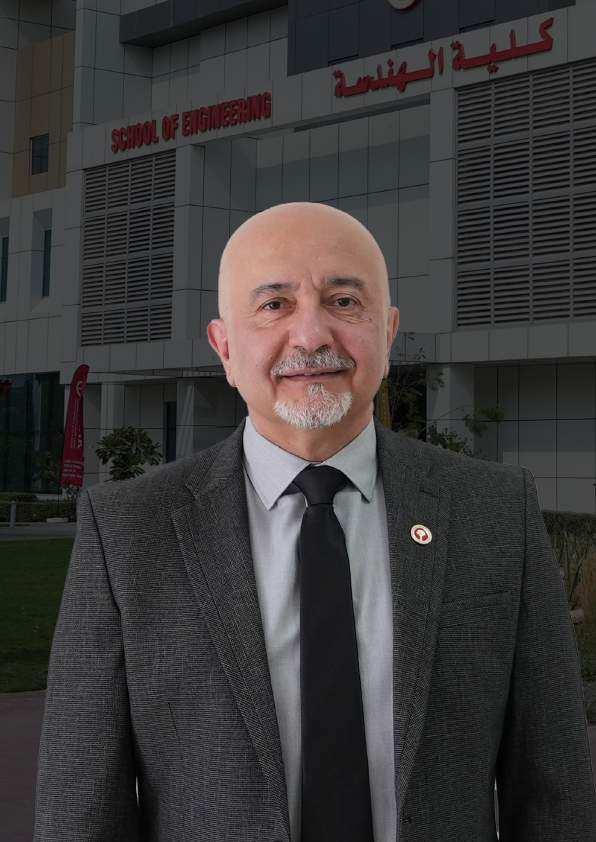
ProfessorKhalidHussain Dean of Engineering and Computing
American University of Ras Al Khaimah (AURAK)
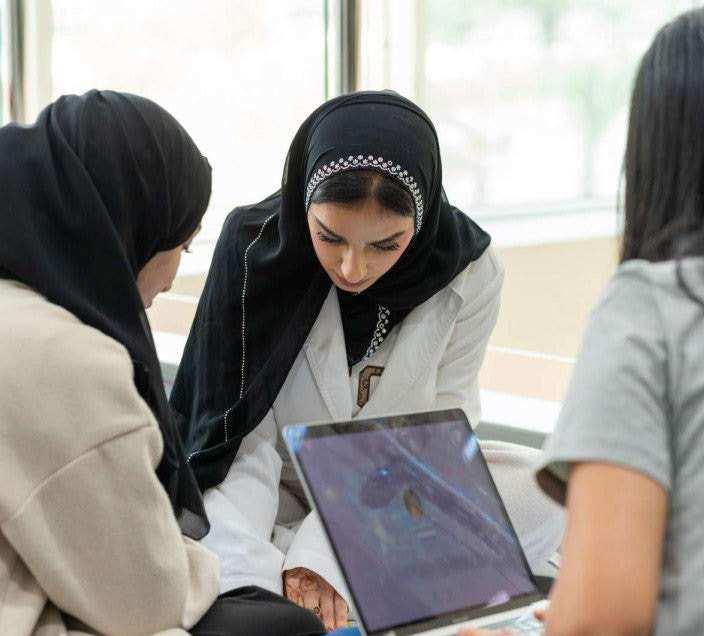
computing education, promoting innovation and enhancing student outcomes. In this role, I have had the privilege of applying my extensive academic leadership experience to guide theuniversitythroughaperiodof significantgrowthandincreased visibility with an emphasis on global competitiveness and social impact.
AURAKisknownforitscommitmenttoadvancingeducationin engineering.Howdoyousee
Generative AI aligning with the university's broader goals for innovation and academic excellence?
At AURAK, we recognize that engineering and computing are central to addressing some of societyís most pressing challenges such as climate change, sustainability, energy scarcity, security, population growth, population aging and the growing concerns surrounding food and water shortages. Engineers
AtAURAK,we recognizethat engineeringand computingare centralto addressingsome ofsocietyísmost pressing challenges “ “

are at the forefront of finding innovative solutions to these global issues and we are committedtoequippingourstudents with the knowledge and skills necessary to meaningfully contribute to these efforts. Our engineering programs are designed to emphasize key areas that align with these global challenges including design, innovation, sustainability, smart technologies, smart cities, renewable energy and more recently artificial intelligence.
Generative AI represents the cutting edge of technological innovation and its integration into our engineering and computing curricula aligns seamlessly with AURAKís broader vision of academic excellence and innovation. The university has long been committed to fostering an environment that encourages forward-thinking, research-driven learning and the development of graduates who are not only experts in their fields but also adaptable to the rapidly evolving demands of modern industries. We are not simply teaching our students the latest technological toolsówe arefosteringacultureofcreativity, critical thinking and innovation,whichareessentialqualities for success in todayís rapidly evolving engineering landscape.
Ultimately, Generative AI complements AURAKís mission to cultivate the next generation of engineers and technologists who are capable of leading transformative change both regionallyandgloballybydeveloping groundbreaking solutions to the worldís most pressing issues.
As this issue outlines, Generative AI is revolutionizing engineeringworkflowsfromsimulation to optimization. How is AURAK preparing students to embrace these AI-driven changesintheirfuturecareers?
AURAK has been at the forefront of AI education in the UAE, proudly becoming the first institution in the country to offer a comprehensive bachelorís program in AI. As a result of the programís success and overall demand, we have also recently introduced an AI minor that is available to all engineering students, and we also are expanding our postgraduate offerings to include a masterís
AURAKhas beenatthe forefrontofAI educationin theUAE, proudly becomingthe firstinstitution inthecountry tooffera comprehensive bachelorís programinAI. “ “
programinAIandDataScience. These initiatives reflect our commitment to ensuring that studentsfromdiverseengineering disciplines are equipped with the foundational knowledge and skills in AI that will be essential for their future careers.
We are preparing students to embrace the AI-driven transformations in the engineering sector by embedding AI tech-
nologies throughout our engineering and computer science curricula. We offer a range of specialized courses that focus on AI, machine learning and data analytics with a strong emphasis on their practical applications within engineering contexts.Thesecoursesandtheir use of cutting-edge tools such as AI-driven simulation state-of-the-art labs, optimization algorithms and predictive analytics models are designed not just to provide theoretical knowledge,buttoequipstudents with the technical skills needed to apply AI solutions to real-world engineering challenges.
And what opportunities and challenges do you see in integrating Generative AI tools into engineering curricula, particularly in terms of ethical considerations, collaboration and skill-building?
Integrating Generative AI tools into engineering curricula offers a wealth of opportunities for students to engage with one of the most transformative technologies of our time. These tools enable students to innovate, optimize designs and simulate solutionstocomplexengineering challenges in ways that were once unimaginable. For example, AI-driven design tools allow students to explore countless design iterations rapidly while AI-powered simulation platformsenablethemtopredictthe behavior of materials and structures under various conditions, allofwhichsignificantlyenhance bothlearningandproblem-solving capabilities.
However, as you mentioned, the integrationofthesetechnologies also presents challenges. The rapid development and deployment of AI raises concerns related to data privacy, algorithmic bias and the broader social impacts of automation particu-
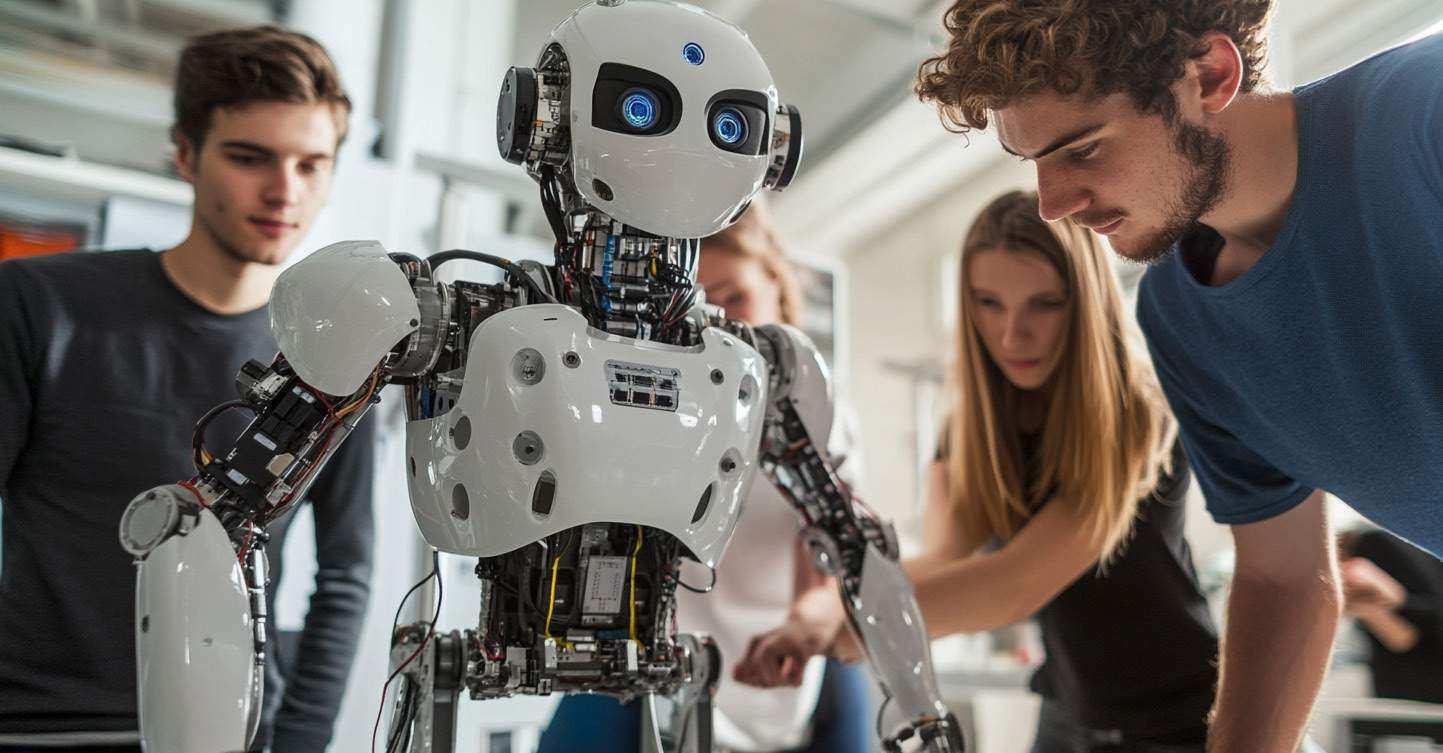
criticallyevaluate thepotential consequencesof AIdeploymentand fosteramindsetof responsibilityand accountability. “ “
on topics such as bias in facial recognition technology and ethical dilemmas in autonomous vehicle design into our engineering curricula. We encourage our students to critically evaluate the potential consequences of AI deployment and foster a mindset of responsibility and accountability.
Asidefromourcoreengineering curricula, we partner with lead-
students develop their technical expertise but also expose them to the practical challenges and opportunities they will encounter in the workforce.
In your opinion, how will the growing presence of AI in engineering industries impact the core skill sets required of future engineers? What should students be focusing on now to remaincompetitive?

cy in traditional engineering fields such as mechanical, civil and electrical engineering will always remain fundamental, future engineers will increasingly need to be adept at integrating AI and data science into their work to deliver innovative solutions. This includes leveraging AI technologies to optimize engineering processes, design more efficient and sustainable systems and address complex interdisciplinary problems that
into our engineering and computer science curricula.
In addition to technical skills, the future of engineering will place a greater emphasis on soft skills such as critical thinking, creativity and the ability to collaborate within multidisciplinary teams. As AI continues to evolve, engineers will increasingly work alongside professionals from diverse fields such as computer scientists, business analysts and
implicationsofharnessingAIapplications responsibly will be key to success.
As Dean of Engineering and Computing, how do you balance embracing cutting-edge technologies with maintaining the foundational engineering principles andskillsthatremaincritical?
At AURAK, we believe that a strong understanding of fundamental engineering principles is the bed-
rock upon which advanced technologies such as AI must be built. Therefore, we ensure that our students master the core concepts of engineering before they move on to more specialized areas like AI and data analytics. For example, in our mechanical engineering program, students are first taught the fundamental principles of mechanics and thermodynamics, which are critical to understanding how systems behave, and are then introduced to more advanced topics like AI-driven design optimization and machine learning algorithms for predictive maintenance. This ensures that students not only know how to use cutting-edge tools, but also understand the underlying principles that govern their application.
In addition to technical proficiency, we emphasize the importance of core engineering competencies that transcend specific technologies. For instance, systems thinking, the design process and the scientific method are key pillars of our curriculum.
Ultimately, our goal is to ensure that students are adaptable, critical thinkers who can apply both traditional and advanced engineering tools in real-world scenarios. By grounding students in core engineering principles while simultaneously exposing them to the latest technologies, wearepreparingthemtobeleaderswhocandriveinnovationinthe ever-changing engineering landscape.
Looking ahead, in excess of GenerativeAI,whatdoyouseeasthe next frontier for engineering education and research? Are there specific trends that excite you?
I believe there are several exciting frontiers in engineering and computer science education and research that are poised to shape the future of the field. One of the most compelling areas is sustain-
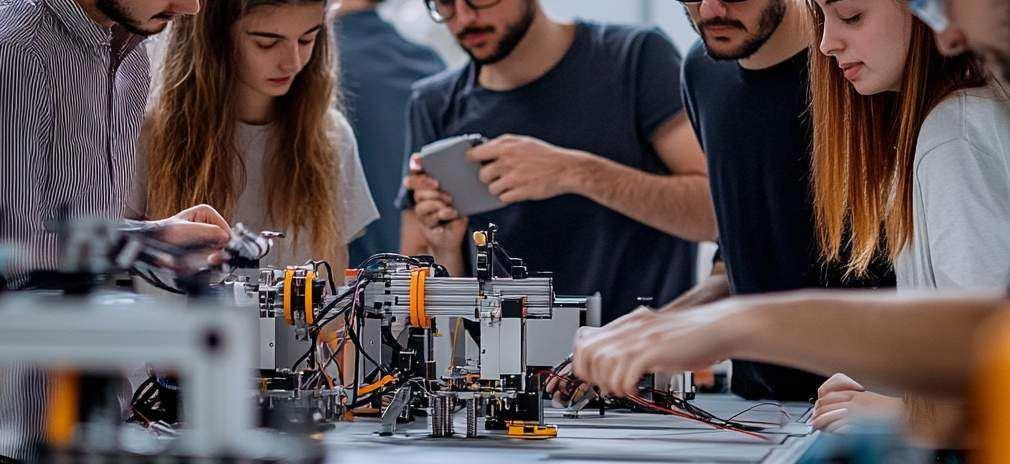
able engineering, which includes advancements in renewable energy, green technologies and sustainable urban development. At AURAK, we are deeply committedtosustainabilityandhave integrated this focus into our engineering curricula as we are keenly aware that engineering solutions will be at the heart of transforming how we produce, consume and dispose of resources.
Another rapidly growing area that excites me is the development of smart systems, particularlyinthecontextofsmartcities, the Internet of Things (IoT) and robotics. We offer specialized
courses and projects in these areas which enable our students to contribute to the digital transformation of society. Lastly, I am particularly excited about the growing impact of biomedical engineering, an area that will revolutionize healthcare and medical technologies. With advancements in areas such as medical robotics, personalized medicine and bioinformatics, biomedical engineers will be instrumental in shaping the future of healthcare.
Thank you for all of your thoughts, Professor Khalid. In closing, what overall exciting prospectsareonthehorizonfor

the School of Engineering at AURAK? What can current and prospective students look forwardto?
Iamthrilledaboutthepromiseof the future, and Iím confident in the range of exciting initiatives, which will significantly enhance both the academic experience and the career prospects of our students, on our horizon. The School of Engineering and Computing is committed to expanding our research centers to focus oncutting-edgefieldssuchasAI, smart systems and sustainable energy, as well as intensifying our efforts to strengthen industry collaboration.
To further bolster employability, we are constantly evolving our academic offerings to stay aligned with industry needs and are also focusing on fostering strong alumni engagement which plays a crucial role in the successofourstudentsviamentorship, career guidance and job placement opportunities. As we continue to grow and evolve, students at AURAK can look forward to a vibrant academic community that is dedicated to innovation, collaboration and career readiness.
Iamthrilledaboutthe promiseofthefuture, andIímconfidentin therangeofexciting initiatives,whichwill significantlyenhance boththeacademic experienceandthe careerprospectsofour students,onour horizon

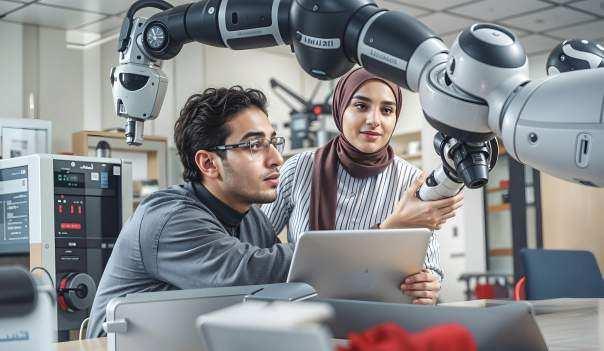



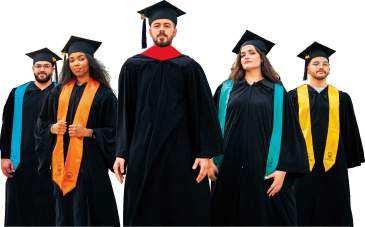
TheRoleofEngineers inSocietyandIndustry
Alifeskill,andnotnecessarilyaprofession
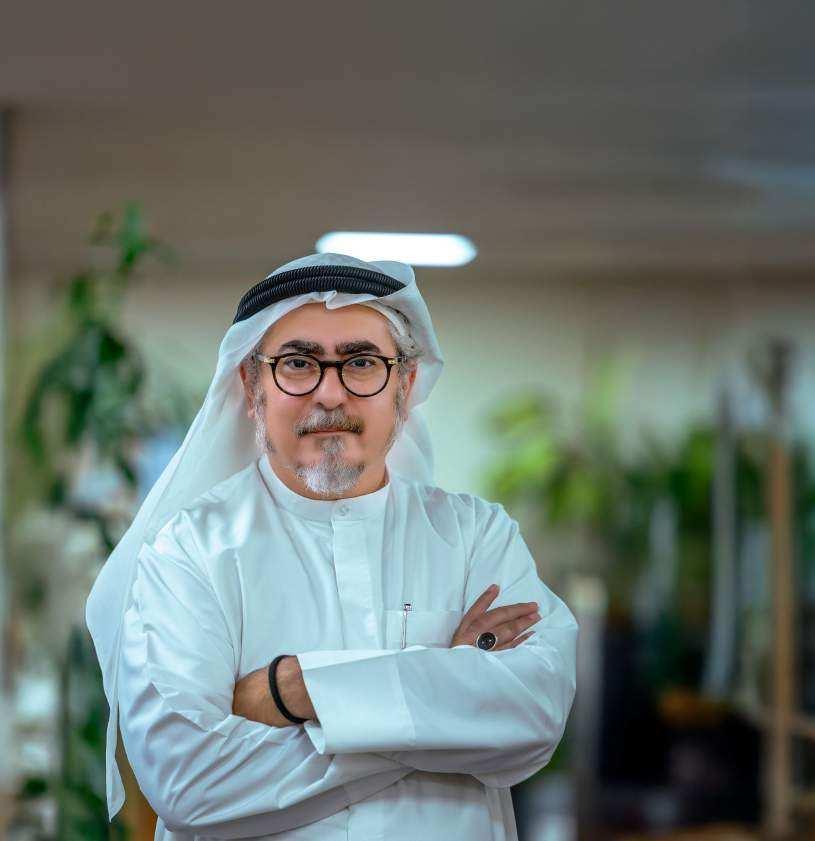
Dr.WaddahSGhanemAlHashmi BEng (Hons), DipSM, DipEM, MBA, MSc, AFIChemE, FEI, MIoD, FIEMA Chairman of the OSH Federal Committee in the UAE and Senior Director in the Energy Sector
ìI
am a strong believer in engaged scholarship and believe that academic learning, if not translated into industrial (i.e. vocational application) action is at times like preserving a box of chocolates until they reach the precipice of expiration.î

Many have asked me as a leaderóand -especially a director for the past 15 years of my careerówhat was the most critical training or certification I obtained that helped me succeed in my various roles in industry, both in my full-timejob,aswellasmyextracurricularbusinessand industry-based activities. I have been working for just over 28 years now and have had around seven different roles, mainly in an energy company based here in Dubai, but also some consulting in the distant past. My work has been mainly in the Environment, Health and Safety(EHS)space,butIhavealsobranchedoutintoso many other areas such as sustainability, business continuity planning, corporate governance, operational excellence, reflective learning and so on.
I am a strong believer in engaged scholarship and believe that academic learning, if not translated into industrial (i.e. vocational application) action is at times like preserving a box of chocolates until they reach the precipice of expiration. There should be a spiral of learningandknowledgeforeveryone,andthereforeitis theprocessesoflearningthatIhavetakenmoresignificant interest in, especially in the past 15 years, rather thantheknowledgeitself.Ihavethoughtlongandhard about the question regarding success and realized that it was my foundations in engineering and what studying engineering taught me about ìthe process of thinking.îThefirstthingyoulearnasanengineerisyour purpose, which simply is to either solve a problem or find a way of making something easier for people. You wanttogetfromonesideoftheriverbanktoanotherso we build a bridge.
So, when you build a bridge what you start to learn, besides the obviousóthe engineering mathematics, physics and calculations and the design etc.óIs every purpose it will serve, and how many it will serve. So, after establishing the problem and looking at solutions, scoping the solution comes after that. Then you considerthevariousoptions,understandingresourcing toaddressthescope,andthenbuildthesolutiontothe original problem. The devil then comes in the details, which is managed by a multiódisciplinary team of engineers and architects. While they all come from different disciplines, they are all engineers who have been trained on the same foundations-some in the same core subjectsóbut most significantly, all have been trained to think in a systematic way, in a logical way, applying lateral thinking and scientific approaches.
Thus, it is amazing how an engineering team, programed to talk the same functional language with thinking founded on the same set of principles, can come together and work on a practical challenge. In
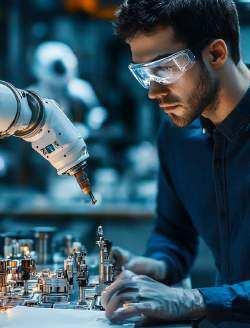
fact, in my first year of university I studied alongside all the firstóyear engineers including the mechanical, electrical, civil and so on. We even did several courses together in the second year, at which point we started to specialize. These were courses like energy studies with the electrical engineers and geotechnical engineering with the civil engineers and advanced thermodynamics with the mechanical engineers.
It has been 20 years since I have had a job that required my engineering discipline skills as a significant part of the role. Most of my peers are similar, and many engineers donít use much of their discipline engineering knowledge beyond thefirst5-10yearsoftheircareer.Iamanenvironmental engineer who graduated some 30 years ago with a BEng (Hons). Graduating from Cardiff in South Wales in the UK was a great experience because only two to three years before I joined, the program had been a materials and mining engineering program. With the closure of most mines, a new type of engineer was to be created-one who could address these challenges of having to clean up much of the mess that was made by the mining and extraction industries beforehand. We were impelled to repurpose land, equipment and skills for the future!
Engineers are agile. From an engineering program designed to build mines and operate them, to a program that is designed to close and decommission these same mines and their associated facilities, you need an engineer for both. And you can transform the engineer for one purpose to the other relatively quickly. This is the fascinating thing about engineers and is in fact
ìEngineersareagile... thisisthefascinating thingaboutengineers andisinfactwhy engineerscan,laterin life,domanyother professionssuchasinIT, finance,management andsoon.î
why engineers can, later in life, do many other professions such as in IT, finance, management andsoon.Infact,althoughtheyareconsideredto have comparatively lesser people skills, in many European companies in the 2000s engineers with diverse organizational experiences were even employed in HR roles.
I have even used my engineering skills to help set up companies. As an expert on governance and leadership, much of the structuring work I did was basedonmystructuredengineeringthinking.Asa director, the design of jobs that I had within my remitinEHS,Sustainability,OperationalExcellence or Marine Assurance was based on the core skills, rationalthinkingandframeworktypeapproaches that I was trained in and continued (in my own time) to explore over the years.
With the advent of the world of digital developments, including the power of Artificial Intelligence (AI) and Machine Learning (ML) that this special issue explores, engineers are, I believe, torn between two generations. The older generation understand and appreciate the first learning principlesinengineering.WhenIdidmyengineering degree back in the 90s, we still used paper and weighted-nib pens to produce engineering drawings. I did in fact start to use a very basic model of AutoCAD software towards the final years.
Programming at the time we still used a program called Fortran 77, although Basic Languages were being used by then was one of thoseskillsthatIneverusedagaininmylife.Butin saying this, given that I had to develop code, I understandtheverybasicsandmoreimportantly principles of programming! I have felt, especially workingwithmykidstodayastheypreparethemselves for university soon, that AI tools like ChatGPT and so on, are very much twoóedged swords. On the one hand it helps, no doubt, with productivity and getting things done faster; I am

concerned, however, that the process of exploration and research, knowledge simulation, processing data and critical thinking could be lost, by having a machine aid in the same.
On the other hand, progress and development in todayísworldneedsspeedandthereisanexpectation that things are done faster, better and with less error. It would be beyond an article like this to talk about the current challenges with accuracy of using ChatGPT for instance, but what I would say is most critical for an engineer to understand and appreciate is that regardless of the use of technology to aid them in their tasks, they remain ultimately responsible and accountable for what they, as an engineer, produce. It is that sense of ownership and personal accountability that must not be lost.
Finally, engineers have been generally stigmatized for not being as emotionally intelligent or empathetic as they could be. I would agree that engineers can be very rational and less creative at times. That does not mean that engineers are not effective in human interactions and social sciences. It is the nurturing of these personal, interpersonal and social skills which engineers must seek to develop within themselves. In my view, engineers have the opportunity to combine these rational thinking and ìengineeringî skills with more social and personal skills to allow them to become more holistic individuals. If they can achieve this balance, engineers can more efficiently solve problems by drawing on socially adaptive approaches to help.
I would recommend that many young people consider a degree in engineering, less as necessarily a verbatim pathway to a future profession as a ìengineer,î and more as an investment in a great, unique skillset, comprised of systematic thinking, processing and innovating. Engineersí approach to problem-solving, in the end, makes peoplesí experiences and the world we live in more efficient, safe and pleasurable. Therefore, it is very important for those who decide to study and graduate as engineers to engage in experiential learning and reflective practice, while developing their interpersonal skills, to enable them to become effective-in whatever they chose to do after they graduate!
“
WhatIwouldsayismost criticalforanengineerto understandandappreciate isthatregardlessoftheuse oftechnologytoaidthemin theirtasks,theyremain ultimatelyresponsibleand accountableforwhatthey, asanengineer,produce.
“
FromResistance toIntegration:
A Reflection on my Journey with AI in Academia
NourMostafaKamel Bachelor of Science in Computer Engineering
American University of Ras Al Khaimah (AURAK), UAE
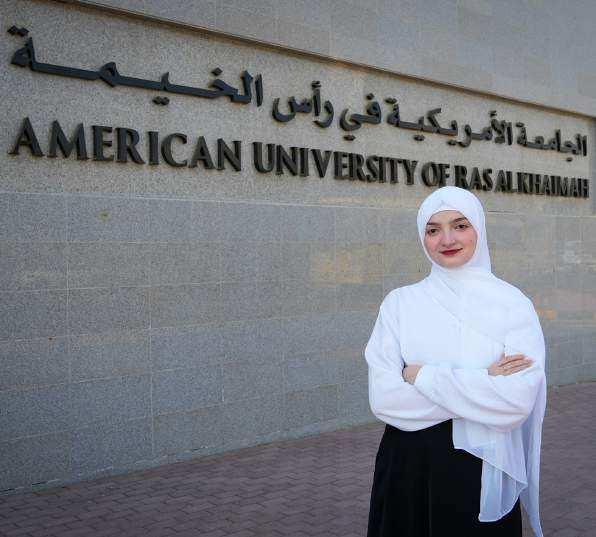
As a senior student majoring in Computer Engineering at AURAK, I find myself, like many others during these times, contemplating the promiseandperilsthatcomewiththetrending tides of Artificial Intelligence (AI). AURAK, with its forward-thinking ethos and excellence-driven culture, has given me ample opportunities to engage firsthand with various types of AI services across diverse tasks. In this essay I will share some of my experience-based insights, as I consider AIís role in education: Is it a tool, tutor or temptation?
AI promises transformative advancements across all domains, and education is no exception. Reflecting on my own experience, I am grateful that tools like ChatGPT werenít around when I took my first ever coding class. The struggle of manually tracing errors, chasing missed semicolons and writing my own comments on every lineólest I forget its functionalityówere all crucial coordinates in my learningtrajectory.Thekeywordinmyprevious sentence is ìstruggleî; it was the aspect of struggling that made learning breakthroughs hard to forget. Perhaps a wise chemical in my brain was signalled to appreciate the knowledge more, and hold onto it tighter, in the face of how hard and long it took for me to acquire and make sense of it. The speed at which ChatGPT answers our questions and ìsolvesî our problems results in our equally fast-paced forgetting of what weíve learned, and in this I see one of his gravest risks.
Adopting AI into my workflow has been a journey fraught with skepticism. I remember being the last in my friend circle to openly use it, if I used it at all. My initial strong aversion stemmed from the huge concern it posed
Thestruggleofmanuallytracing errors,chasingmissed semicolonsandwritingmyown commentsoneverylineólestI forgetitsfunctionalityówereall crucialcoordinatesinmy learningtrajectory. “ “


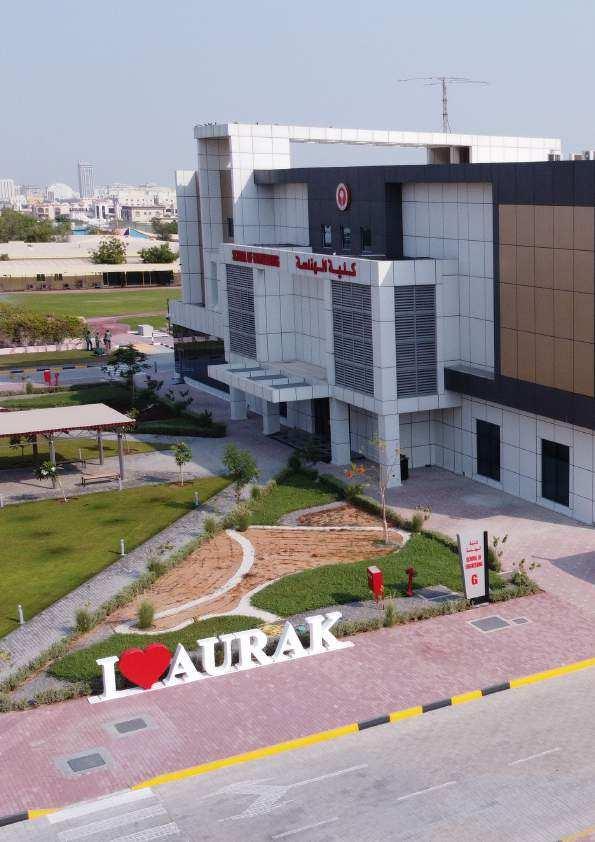
about the authenticity of my work and my own self-image of my integrityówhether academic or otherwise. I often asked myself: ìWhat if one timeIgetthefullmarkandwonderifitismewho earned it or ChatGPT? What toll would that take on my confidence in my abilities, and, more importantly, would it make my brain lazy? How do I leverage it without losing myselfómy voiceóin the process?î In its early days, it was famously known the lazy studentsí way out. Nevertheless, and despite my initial reservations, it is increasingly clear that AI is becoming more and more reliable and refusing to adopt it would mean losing a competitive edge. I began to see my professors openly discuss using it and, suddenly, it wasnít so scandalous or shameful anymore.Itwasamatterofuseitcorrectlyorget left behind, use it incorrectly and risk compromising the career youíve barely begun to establish. Iíve learned, over time, to consult AI websites for tasks like re-explaining slides that didnít make sense to me or answering super specific queries that typical Google searches fail to address. It also helped speed up the process of learning new programming languages, not only by writing highly customized code (that sometimes doesnít run), but also explaining it line by line. While I miss chasing my semicolons, AI has become a sort of virtual tutor: it replies instantly and doesnít get tired of my endless questions. It isasthougheverystudentinourgenerationnow has an unofficial minor degree in Prompt Engineering.
Although AI tools can be incredibly helpful, theyíre also far from perfect. One of their biggest
problems, for example, is hallucinating resourcesfortheirclaimsorramblingwithfloweryprose whereitdoesnítfit.Howmanytimesdidyouclick on a link given to you by ChatGPT only to end up nowhere? To use AI effectively, you must learn the ropes and invest time in evaluating its outputs.Infact,eventhen,theresultscouldoften still be of a highly questionable quality. What most students really donít consider, however, is that writing is a process, not just a product. If a studentdoesnítgothroughtheprocess,thefinal productisnotreliableevidenceoflearning.Brain synapses are formed during the (often frustrating) moments of figuring out how to articulate ideas or find that missing piece in the equation and skipping this step with AI shortcuts undermines the development of critical thinking. As I engage with AI tools on a day-to-day basis, I make a conscious effort to never allow it to take over my creative process or do the ìthinkingî for me. The author Joanna Maciejewska said, ìI want AI to do my laundry and dishes so that I candoartandwriting,notforAItodomyartand writing so that I can do my laundry and dishes,î which deeply resonates with me. Engineering, at least from a design perspective, is a form of art after all.
Itisevidenttome,as someonewho experiencedtheìAI boomîinthevery middleoftheirdegree, thatAIuseshouldbe withheldin foundationalcourses.
Even before the advent of AI, the education system was due for a significant overhaul. Perhaps AI is the catalyst that will finally bring about the changes future generations deserve. Looking forward, I do not find myself in fear that AI might ìtake overî my future job. One of my professors told us in a class that the invention of ChatGPT for programmers is like the invention of calculatorsformathematicians.Itspeedsupthe process, allowing us to focus on solving meaningful problems rather than wasting time on repetitivetasks.AIis,atitscore,atoolóapowerful one that can enhance productivity, streamline workflows and open up new paths of possibility and inspiration. It pushes us to rethink traditional structures, enabling engineers to exploreunchartedterritoriesmoreefficiently.Itis evidenttome,assomeonewhoexperiencedthe ìAIboomîintheverymiddleoftheirdegree,that AI use should be withheld in foundational courses. Rather, AI tools should be reserved for use in later stages when individuals are more equipped with a strong knowledge base and can utilize it for productivity and assistance ratherthanforsalvation.WeshouldleverageAIís capabilities to amplify our efforts rather than substitute them. AI is here to aid, not to replace, and recognizing this distinction is key to unlocking its true potential in any domain.

Unleash your potential at Nazarbayev University
Discover a world-class education at Nazarbayev
top universities, located in the heart of Eurasia. Ranked in the top 11% of Asian universities and #106 among World Young Universities, NU offers a globally recognized academic environment that nurtures future leaders.
NU is internationally recognized for its research excellence and boasts partnerships with prestigious institutions such as Duke University and the University of Pennsylvania, offering
students access to cutting-edge knowledge and global networks.
Study in a state-of-the-art campus equipped with modern learning facilities, while benefiting from a supportive and safe environment. With a strong focus on research, NU provides students with opportunities to publish their work and contribute to the worldʼs knowledge economy.
Join NU and be part of a university that shapes future global leaders and innovators.
AdaptingtotheFuture
Preparing for Software Development in the Age of Generative AI
Anne-GaelleColom
Assistant Head of School and Learning and Teaching Director, School of Computer Science and Engineering,
University of Westminster, London, UK
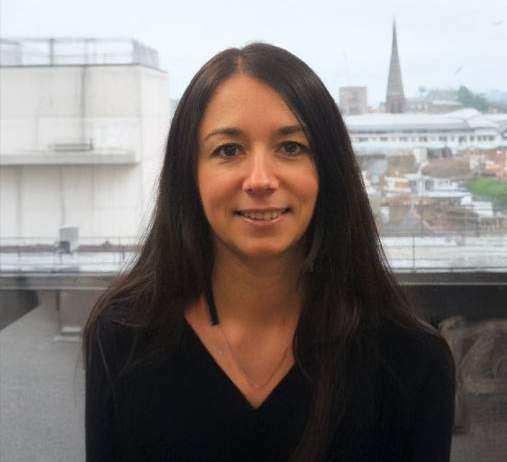
Generative AI is revolutionizing software development, enabling developers to write code and build prototype applications far more quickly than previously possible. These advancements bring significant efficiency gains but also signal a coming shift in the required skills for software developers.
Ultimately, Generative AI will redefine the roles of software developers and the expectations placed upon them. For prospective students, parents and educators, understanding these changes is critical to preparing for the future. AI tools, such as GitHub Copilot, ChatGPT and Cursor, excel at producing highly modular code and solving previously seen or well-defined problems. This means that the demand forjuniordevelopers,whotraditionallyfocuson these tasks, is diminishing. Companies are shifting from hiring junior developers to seeking professionals with a different and more advanced skillset to develop new workflows that include AI integrations.
To remain relevant, developers will need to be capable of reviewing, evaluating, improving and integrating AI-generated code into complex systems. This is also true for students trying to join the profession. The need for them to develop a robust foundation in computer science principles has never been greater. The low skilled developers will completely be replaced by AI, and instead, we anticipate a greater need for people to fill roles that require critical thinking and strategic oversight. Let me explain why.
One can argue that AI significantly enhances the efficiency and capabilities of all coders. However, the truth can be somewhat different. Coders with extensive experience in building complex solutions have learned to anticipate, recognize and solve problems. They can use AI
ItísinwhatIwouldcall theìsufferingîthat studentsdevelopthe criticalthinking, troubleshootingand problem-solvingskills essentialforbecoming gooddevelopers. “ “
Ultimately,GenerativeAI willredefinetherolesof softwaredevelopersand theexpectationsplaced uponthem.For prospectivestudents, parentsandeducators, understandingthese changesiscriticalto preparingforthefuture.
“
as a tool to quickly build various prototype solutions which they can challenge, test and optimize, expanding their knowledge in the process. They also understand the importance of code maintainability. As a result, they consistently critically evaluate and refine AI-generated suggestions to ensure quality and focus on complex architectural decisions andstrategicintegration.Inotherwords,experienced developers use AI to speed up the implementation process for solutions they designed, engineered-or at least fully understand.
For students and novice developers, coding with AI initially looks like magic. AI is indeed capable of building prototypes in minutes and implementing most parts of an average real-world application requirements. As a result, the temptation to over rely on AI is huge. A traditional software development learning process involves writing code from scratch, testing it, making mistakes, introducing bugs, fixing them and reflecting on those experiences. This iterative process, while challenging, is where much of the deep learning happens. Itís in what I would call the ìsufferingî-the frustration of debugging, the persistence required to solve problems and the eventual ìlight bulbî moment of understanding, that students develop the critical thinking, troubleshooting and problem-solving skills essential for becoming good developers.
Generative AI can shortcut this process by providing ready-made solutions. When students rely heavily on AI-generated code, they miss opportunities to fully grasp the logic, structure and nuances of programming.
Struggling with a problem and learning to overcome that problem is what builds the resilience and expertise needed to tackle more complex challenges in the future. Thus, without deliberate effort, junior developers risk missing out on the underlying computer science principles and deep problem-solving experiences that foster growth.
Educational institutions must always adapt their curricula to reflect industry trends, and this is particularly true here. Traditional coding skills remain essential, but they must now be complemented by:
ï AI Literacy: Understanding how to integrate and optimize AI tools in workflows.
ï Critical Thinking and Creativity: Evaluating andrefiningAI-generatedoutputsforaccuracy and relevance.
ï Ethical Awareness: Addressing biases and ensuring responsible use of AI.
ï Problem Understanding: Developing a deep comprehension of problems to effectively guide AI in creating tailored solutions.
ï PromptEngineering:Learning to write precise and effective prompts to direct AI tools.
Work-based learning, such as incorporating insights from work-based practices and how
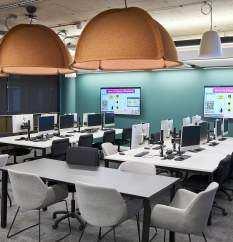
senior developers operate, can further prepare studentsforreal-worldchallenges.Asdiscussed earlier, senior developers often work collaboratively and use AI to streamline processes while maintaining oversight. Universities can mimic these practices through projects that combine teamwork, AI integration and code review. For example, coursework might include:
ï AI-student pair programming, where studentscollaboratewithAItowritecode.The AI partner generates solutions, but the student refines and completes the code, especially in situation where AI outputs are incomplete or flawed.
ï Critical analysis of AI-generated outputs, wherestudentsarerequiredtoidentifypotential errors and areas for optimization.
ï Working with APIs, where students must addressissuesworkingwithupdatedAPIsthat the AI was ìnot aware ofî and that had poor backwards compatibility, leading to errors or bugs.
ï Simulations of professional environments, where students manage AI-assisted workflows, oversee code quality, ensure correctness and confirm it would work in a mission critical scenario.
Students should also use AI as a powerful learning tool. With the help of AI, they can experiment with coding concepts, generate examples and debug their projects. This enables students to reinforce their understanding while also cultivating the independent problem-solving skills essential for long-term success.
As generative AI becomes an integral part of software development, equitable access to these resources is critical. Advanced AI models often require paid subscriptions, creating disparities among students. Universities and colleges must consider providing institutional licenses, ensuring all students have the opportunity to build proficiency with these tools. A growing trend is that API costs for businesses have been dropping, but becoming more expensiveforconsumersubscriptions(consumer access to o1 pro is currently $200/month).
Moreover, educators must guide students in understanding the ethical implications of AI usage to prepare them to adapt to AI-driven
We have over 30 fully equipped PC and Mac laboratories for games, cyber security, virtual reality and AI with various operating systems, software and VR hardware. Courtesy of University of Westminster.
Embracing generativeAIin software developmentis nolongeran option,itis essential. “ “
development responsibly. This includes addressing issues such as intellectual property, bias in AI models, and the societal impact of automation.
EmbracinggenerativeAIinsoftwaredevelopment is no longer an option, it is essential. However, to thrive in this evolving landscape, aspiring developers must strike a balance and exercise caution. While AI tools are powerful, they cannot yet replace the creative and analytical abilities of a well-trained developer, who is capable of identifying flawed or incomplete solutions proposed by AI.
Studentsalsoneedtoshifttheirmindset.AsAI now outcompetes the average developer and those lacking advanced skills, it is essential for aspiring developers to work hard and fully commit to mastering fundamentals. Students must pursue project-based learning,explorenewtechnologies,makemistakes and learn from them in order to foster the creativity and resilience required to adapt to this dynamic field.
Toconclude,GenerativeAIisatransformative force in software development. It offers both challenges and opportunities for innovation. Educational institutions play a crucial role in helpingstudentsembraceAIthoughtfullyand acquire advanced skills to enable them to succeed as adaptable, creative and ethical professionals in the competitive and rapidly advancing software engineering industry.
Our brand-new innovation space is a multi-purpose area for students to work on group projects, present and pitch their work, study individually and socialize. It is equipped with state-of-the-art computers and displays. Courtesy of University of Westminster.



